Banana ice cream (the infused way!)
Bananas must be among the most beloved of all fruits (to be botanically correct, it is actually a berry!). For ice cream lovers, the attraction is obvious – good, genuine banana ice cream is delicious!
Our ice cream will – of course – also be based on genuine bananas. But to make things more interesting, we will try a recipe where we actually (only) will use the unique flavour of the bananas. The key to this will be infusion! Yeah, I know – it is fascinating stuff … and the result is fantastic!

Bananas – popular among both young and old!
Bananas – a very short history
The history of bananas dates back to ancient eras. In more modern times, bananas have even had geo-political consequences, particularly in the Americas. Originating in New Guinea, the banana spread with Austronesian traders over the Indo-Pacific already in ancient times. From thereon, the banana continued to other parts of tropical Asia. Later on, one main drivers behind their eventual spread over the globe would be the early expansion of Islam: Together with Islam, the banana was brought to Palestine, Egypt, and onwards to the rest of North Africa, to (the Christian) Cyprus and to the then-Muslim Iberia. The next big expansion took place in the 15th and 16th centuries, when the Portuguese started up banana plantations in the Caribbean, and in the South and Central America. In most of Europe, bananas continued to be quite rare throughout the Victorian era.
By the 1880’s, the banana had become quite well-spread in North America. With the continued developments in modern transportation and refrigeration, the scene was set for more global operations and the rise of multi-national giant corporations, and brands like today’s Chiquita and Dole.
The term “Banana republic” was coined already in 1901, reflecting the immense and corrosive influence of the Banana companies over both the economic and political life in several of the banana-growing countries.
Banana ice cream – the infusion way
Bananas and ice cream go very well together. Did you know, for example, that the banana is about the only fruit that does not need any additional sweetening (beyond what the base itself requires) to function in ice creams? No big surprise then that bananas often form the basis in many vegan ice creams (“nicecreams”). In most recipes, the bananas are usually mashed and added to the base. But we will try another way – infusion!
The idea and basic recipe comes from the unparalleled Stella Park (a k a BraveTart). Her core idea is to boil and steep the bananas in milk over night (or longer: Park recommends at least 24 hours): the flavour will release and transfer to the milk, giving us “true banana” … without the actual bananas, so to say. Could this really work? Intrigued, I decided to give it a try!
To maximise the flavour, the ideal bananas should be over-ripe: about the time when others want to throw them away, they should be perfect for your ice cream!
Let the infusion begin!
Slice the bananas, put them in a sauce pan together with the dairy and the vanilla. Stir every now and then, until the mixture begins to simmer. Then, take off from the heat and let cool down. When cool enough, pour the banana-dairy mixture in a suitable container, cover and refrigerate at least over night and – following Stella Park’s instructions – for 24 hours or even longer.
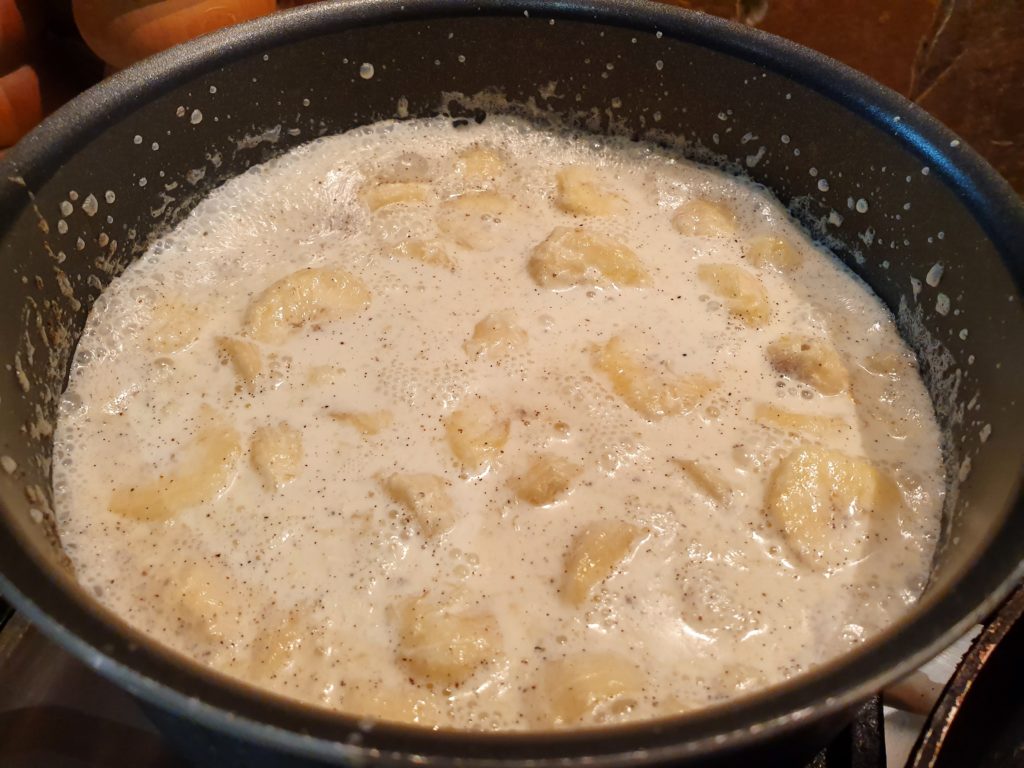
The banana – sliced, and simmering with the vanilla in the dairy. The infusion experiment has begun!
About 24 hours later (or however long you keep the infusion going), it is time to separate the banana pieces from the dairy: their flavour now basically transferred to the dairy mix.
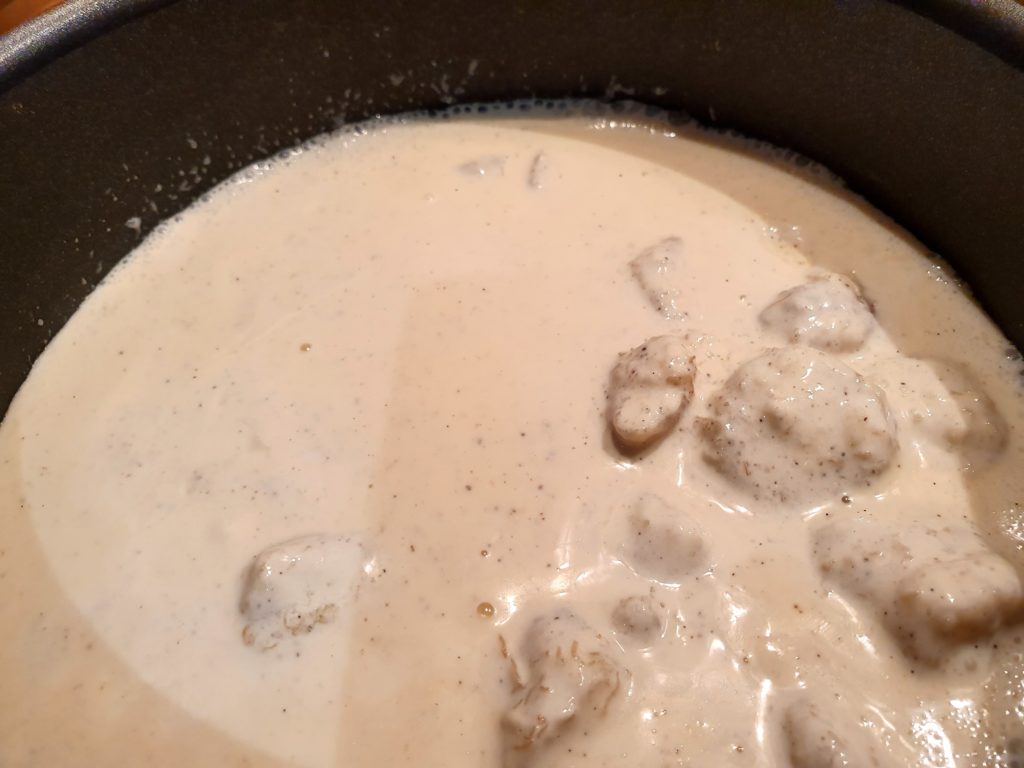
After over 24 hours infusion, the banana pieces have paled quite a lot. They have now served their purpose!
Next step – operation Squeeze
I used a spatula and a simple sieve for the next step: Gently push to ensure the bananas give off whatever dairy they still contain.
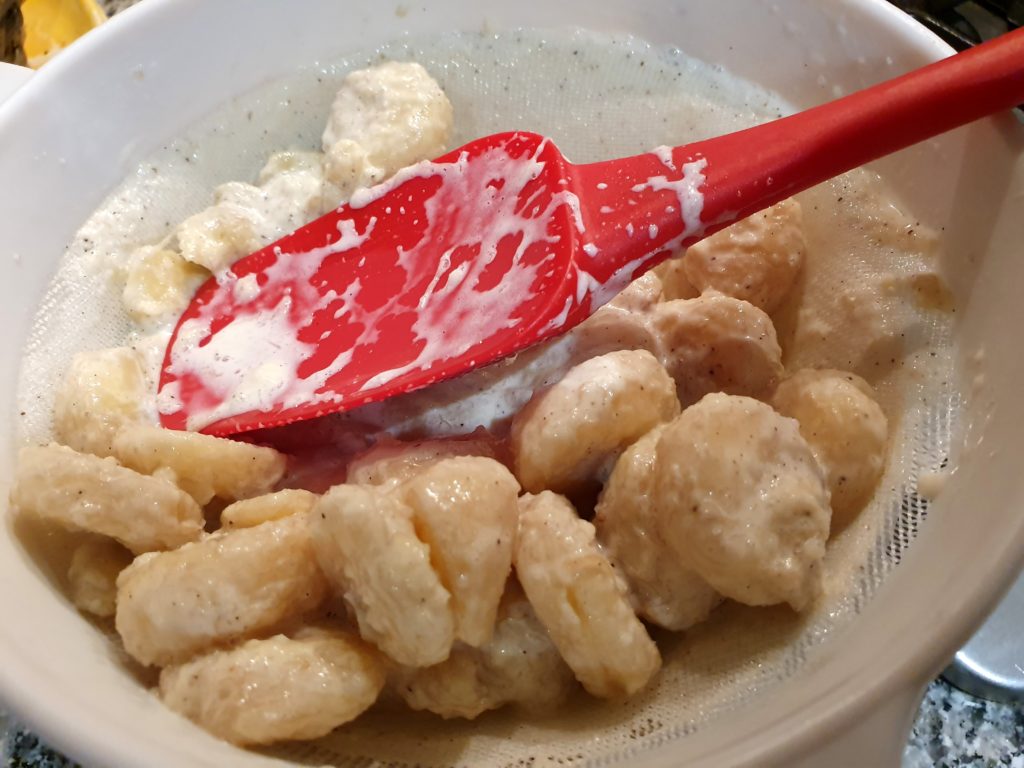
We want to extract as much of the milk as possible from the banana pieces before we discard them: push persistently until you feel that they have given you all they can!
The last step … creating a custard base
Stella used the traditional custard making procedure, but I went with the more direct Modernista approach: simply mix your strained banana-flavoured dairy with the egg yolks and the sugar(s) in a sauce pan, then heat it all in one go.
As with all custard bases, stir with a wooden spoon or a spatula and bring the base up to (no more than) 85 degrees Celsius/185 º F: the so-called Nappe stage, and also the recommended temperature to bring about pasteurisation.
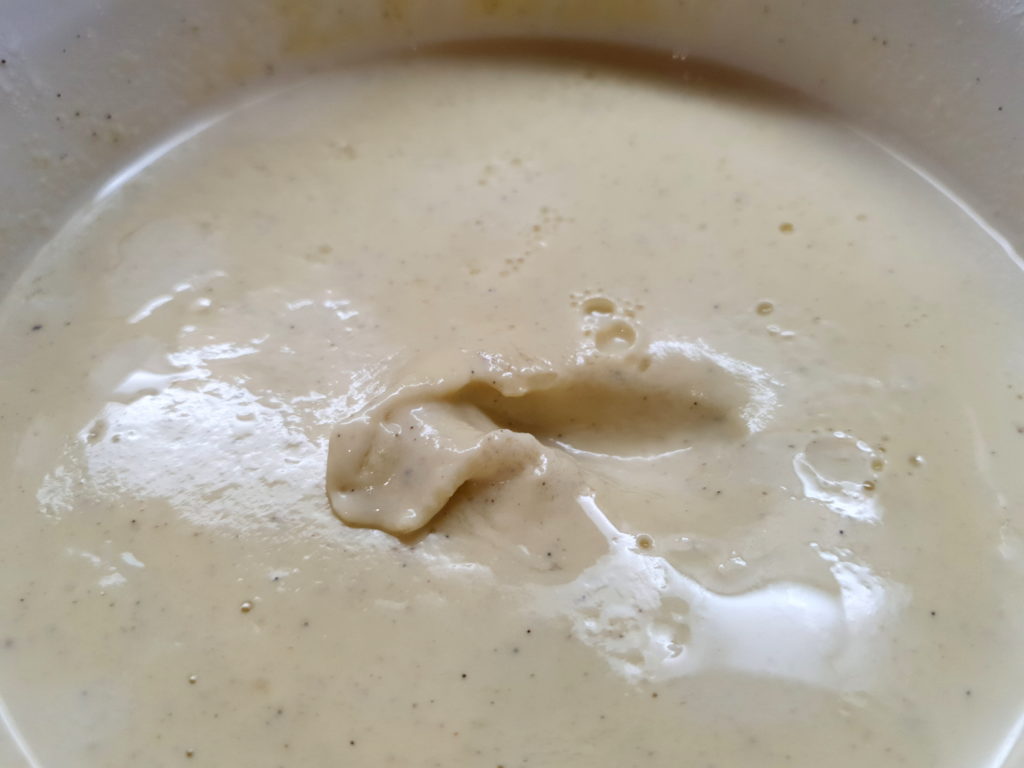
Observing the gentle smoothness of a well-made custard base can offer particular moments of ice cream beauty (at least if you’re like me 😉 )
When the (now custard) ice cream base is ready, let it cool down and preferably chill in the refrigerator a few hours before churning it in your ice cream machine.
If you have no ice cream machine, take a look at this post for some ideas on how to make it anyway with your ordinary home freezer.
A fantastic Banana ice cream!
Stella Park called her recipe Crazy Banana, and the infusion method really delivers on the flavour! In fact, this ice cream tastes more of banana than most other banana ice cream that I have ever come across. It really baffles the mind that the ice cream only contains the flavour, but not the actual bananas themselves. The infused flavour is well and truly genuinely banana, and the method seems to have concentrated and reinforced what still feels totally natural! Neither me, nor the delighted testers could hardly believe it 🙂 . The ice cream is simply great, and not only flavour-wise. The consistency is also excellent – smooth, delicious and scoopable.
Indeed – if you plan on testing only one banana ice cream this decade, this should be the one!
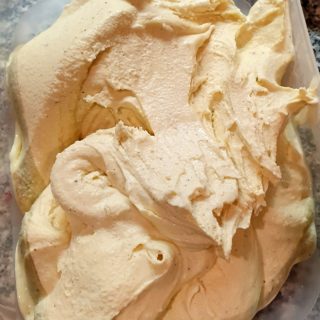
Banana ice cream
Ingredients
- 300 ml cream
- 200 ml milk
- 3 large preferably over-ripe bananas
- 5 egg yolks
- 125 ml sugar
- about 1/2-1 teaspoon genuine vanilla extract
- optional: about 1 tablespoon inverted sugar such as corn syrup or its likes
- optional: about 1/4-1/2 teaspooon ground cinnamon
Instructions
- In a sauce pan, mix the milk and the cream and add the vanilla (and cinnamon, if using) and the sliced pieces of the bananas. Bring to a simmering almost-boil, then take off from the heat and let cool down.
- When cooled down, cover and put aside in the refrigerator to seep for, preferably, at least 24 hours.
- Once the infusion is over, sieve off the banana pieces from the dairy: gently use a spatula or similar to extract as much of any remaining liquid still clinging to the banana pieces. Discard what is left of the banana pieces and prepare the final custard base.
- Mix the banana flavoured dairy with the sugar(s) and the egg yolks.
- While stirring frequently, bring the base up to 85 degrees Celsius/185 º F: the so-called Nappe stage. Take off from the heat, let cool down and then refrigerate covered for at least 24 hours.
- Churn the chilled custard base in your ice cream machine, or still-freeze using only your kitchen freezer (see separate post here on the blog on how to best do this!)

– OK, the scenery is fantastic, but where is the Banana ice cream you promised to bring?
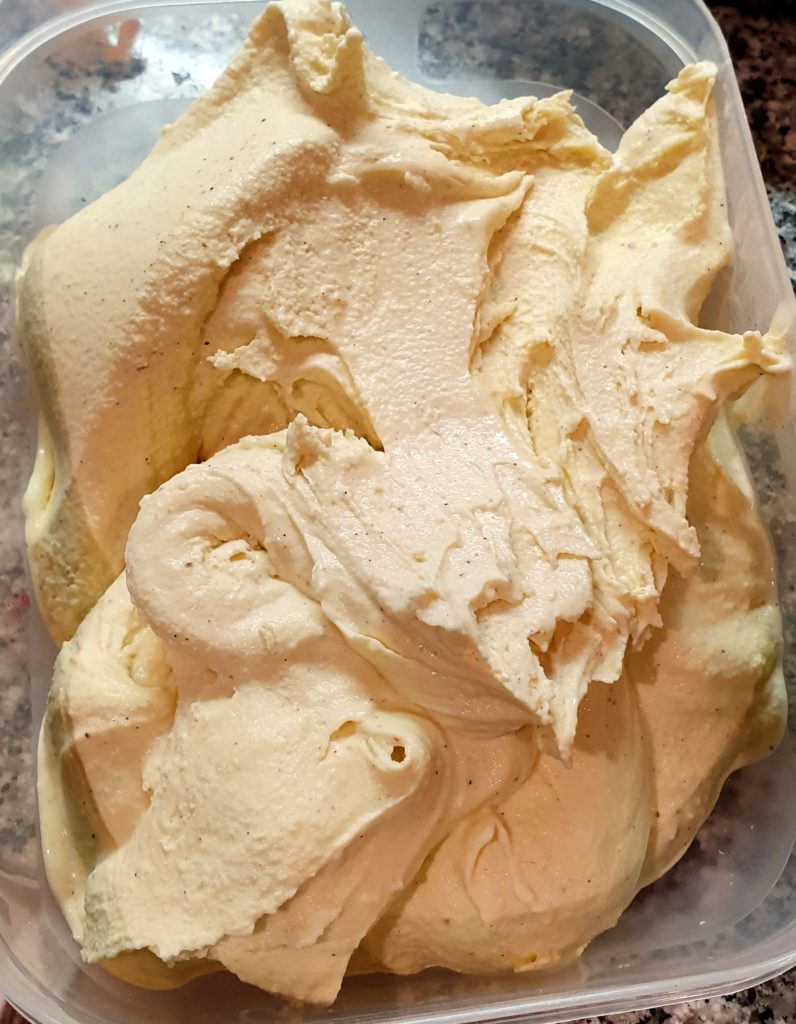
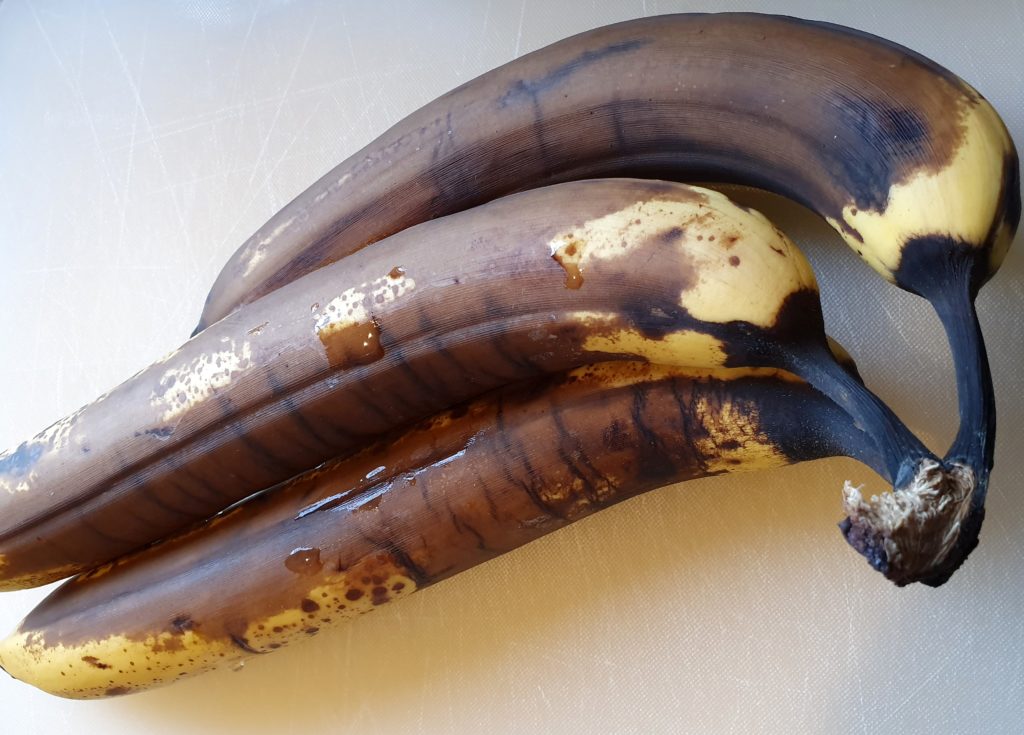
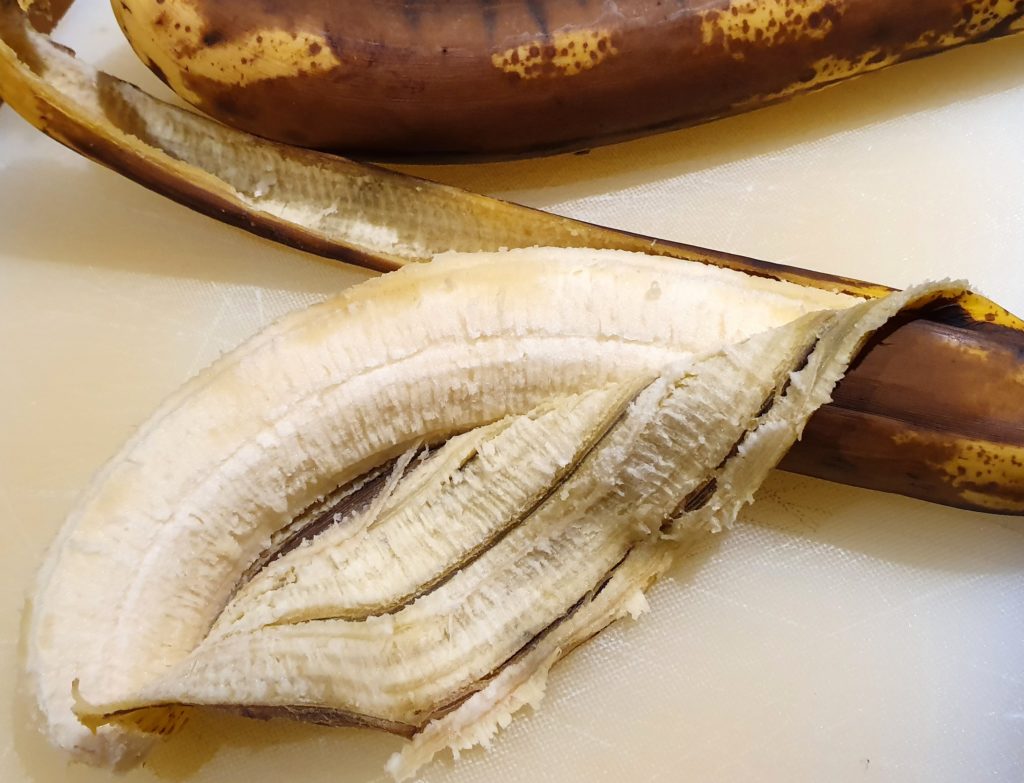
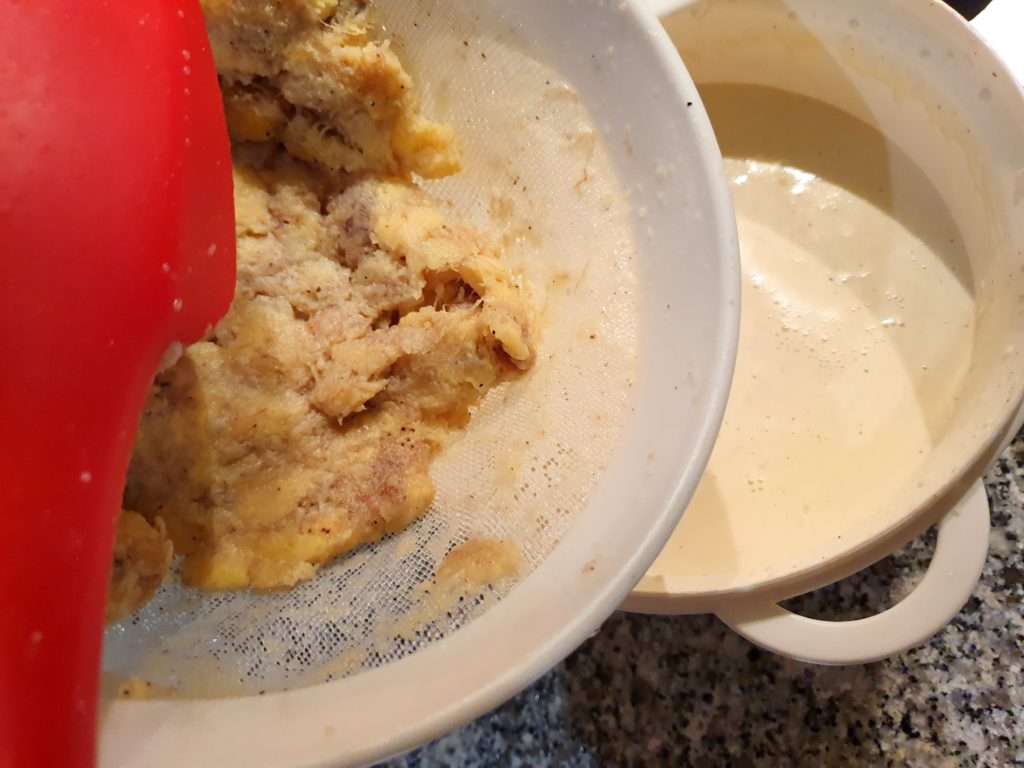
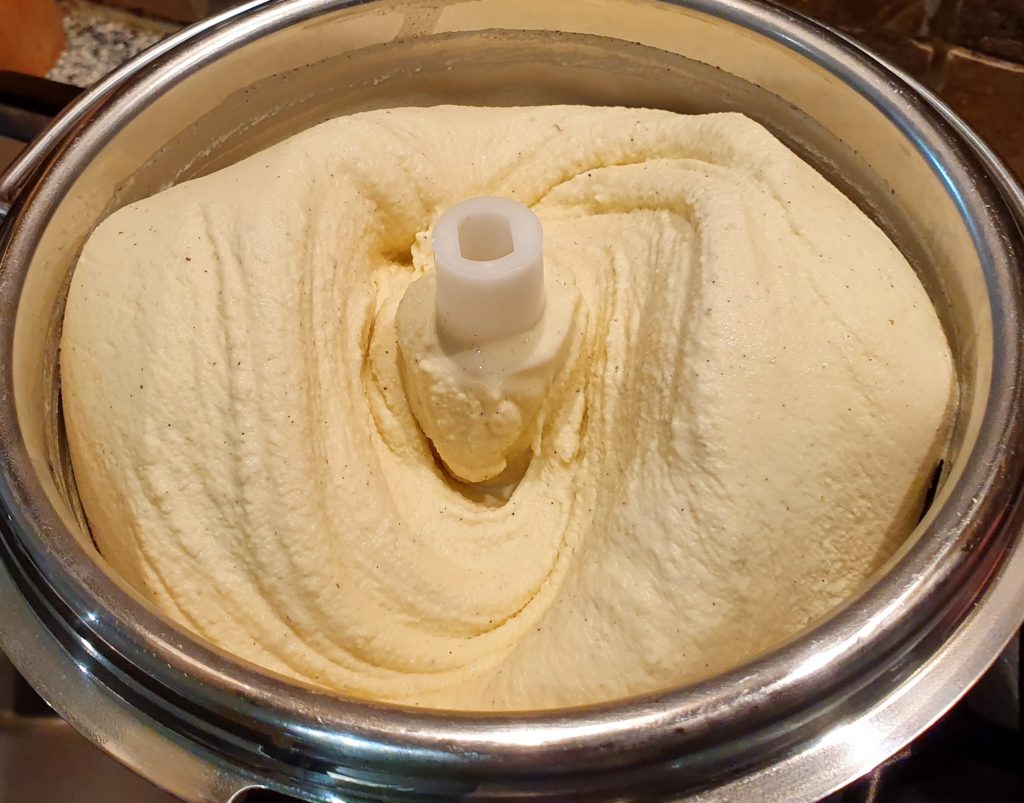
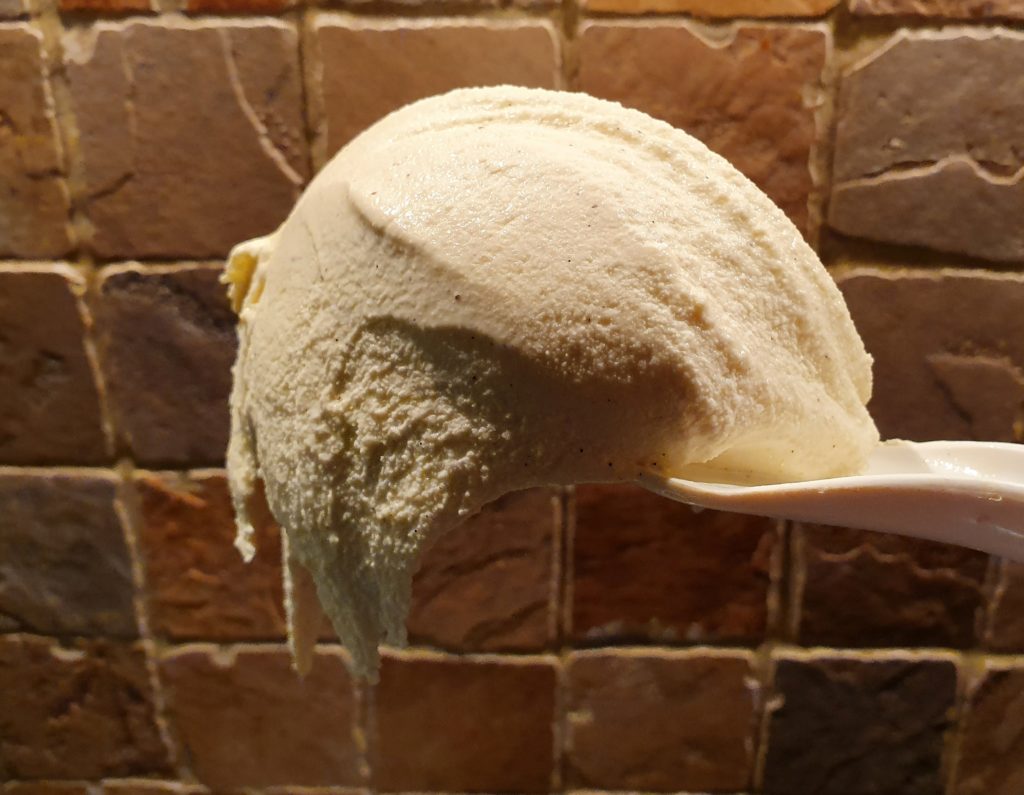
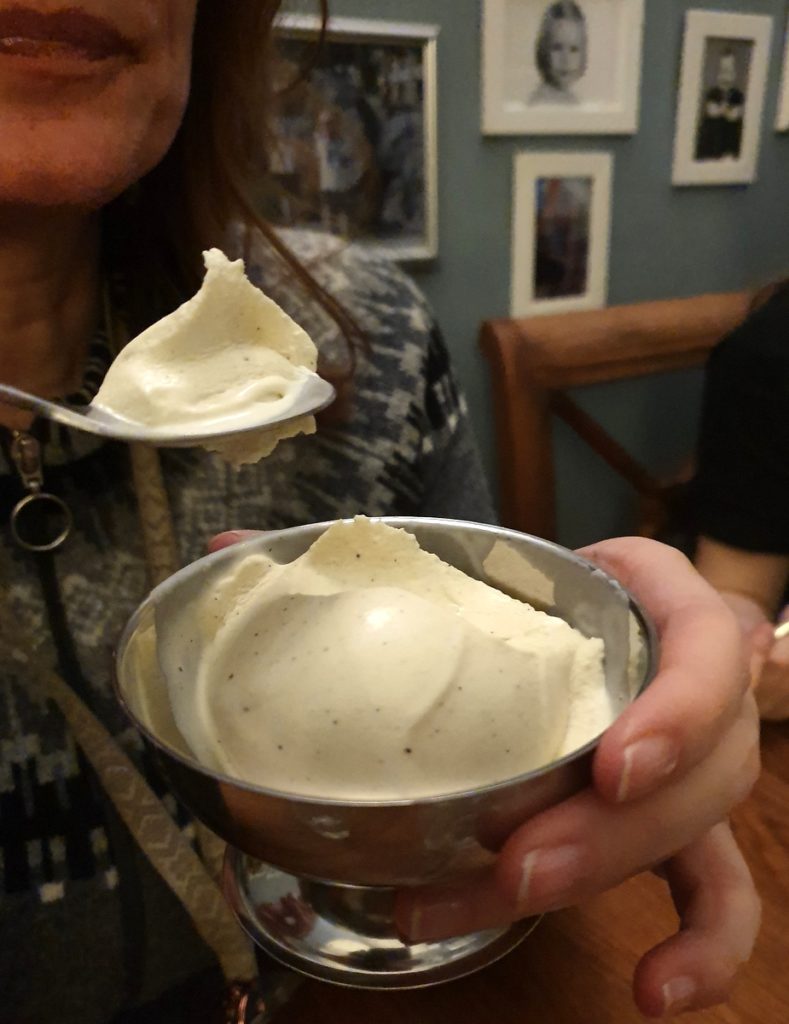
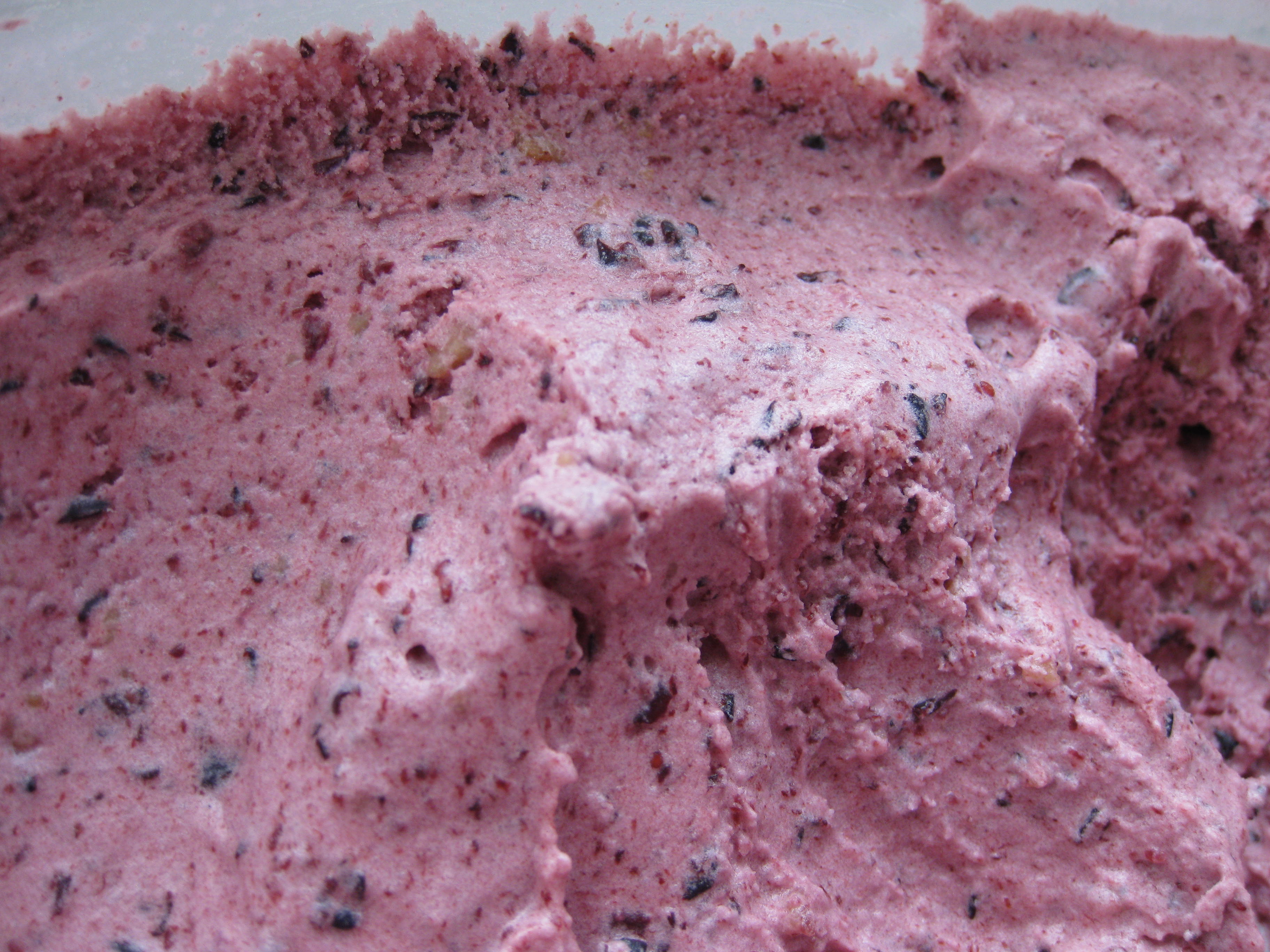
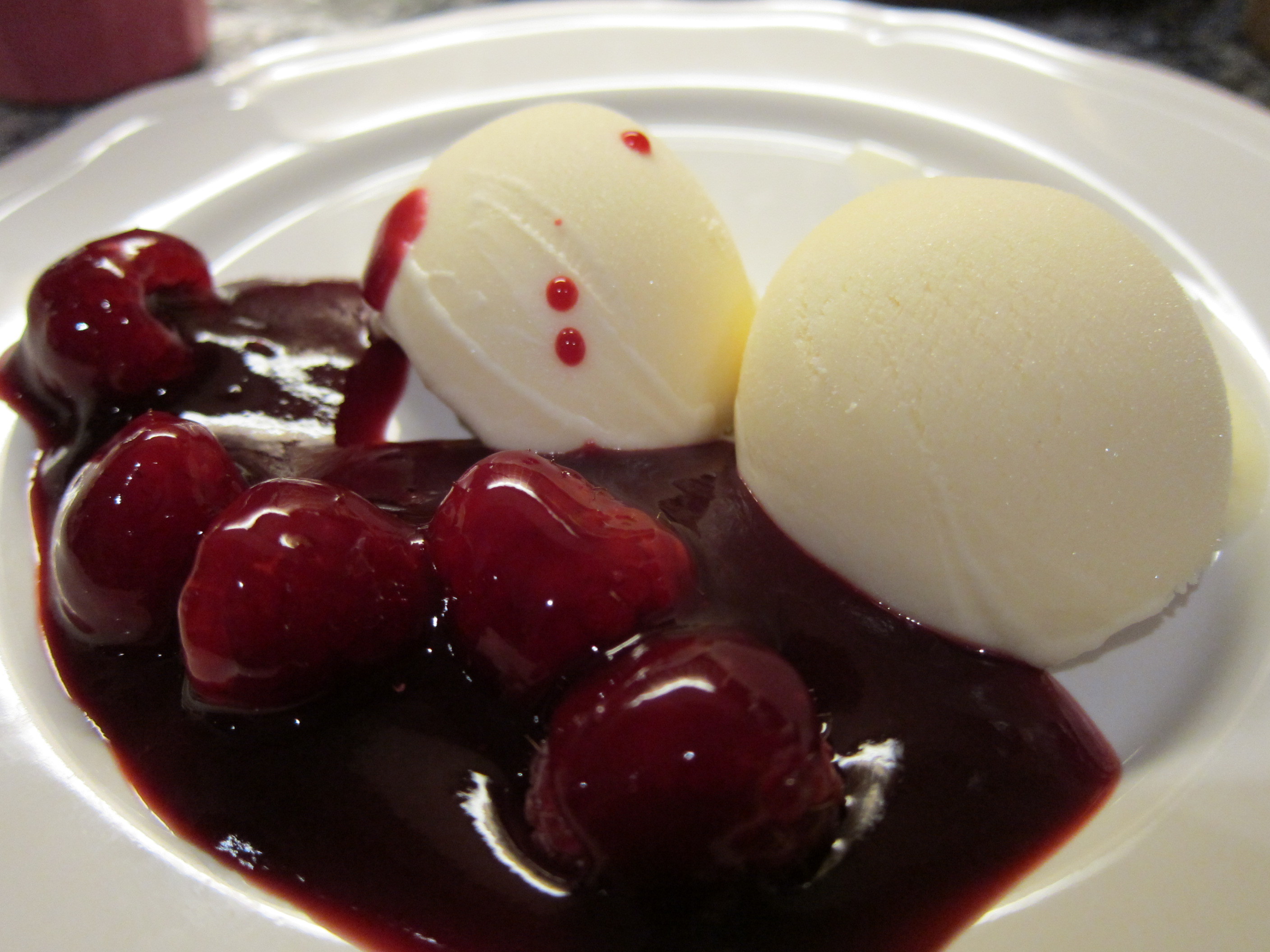
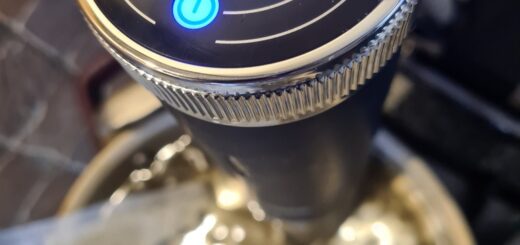


Anders thanks for this recipe it is sensational, by far the best I’ve ever tasted. I noticed that the volume yield was lower than other recipes and the final deep frozen result was very solid. I’ve put this down to the churn incorporating less air . Is there anything else that could cause this or any additional process I could use to improve this?
Many thanks, Marcus
Hi Marcus,
Yes – it is a truly fantastic banana recipe! The yield might perhaps be somewhat lower than some other recipes, but this can of course simply be addressed by making more :-).
As for the end result, I’m not really sure what might have happened with your batch: it really should not be as deep-frozen and solid as you describe it. There are a number
of options you could try to improve the “scopability”. Without going over the top and start to alter the basic proportions of cream etcetera, you might consider adding 1-2
tablespoons of neutral hard liquor (like vodka) to the base just before the churning. Or add 1-2 tablespoons of inverted sugar (such as corn- or glucose syrup). Or replace some of the white sugar with birch sugar (xylitol).
Best of luck with your coming batches!
Anders thank you so much again for your comprehensive reply. I shall thoroughly enjoy experimenting
I’ve successfully used the infusion method for coffee ice cream, infusing whole coffee beans. I know you’ve had some dodgy experiences with coffee beans but this whole bean – uncrushed – method produces an exceptional flavour. I believe it originates in the Cipriani Hotel in Venice where the recipe is a sworn secret but it’s filtered down ( if you’ll excuse the pun) through English chef Simon Hopkinson.
That’s the right experimental spirit! And thanks for reminding me that coffee beans can be infused whole – gotta try that 🙂 !
Will the banana mash still work for banana bread after the infusion is pressed from it? If no, any suggestions what I can make with it?
Hi Elm,
I haven’t tried myself – I suggest you taste the mash and decide for yourself: while – technically speaking – I’d say that it could be used for banana bread, I fear that it might have lost most of its banana flavour by that point in the process :-/
Could you use custard powder to make the custard?
Dear Courtney,
You could probably use custard powder to make custard, but how well the result pans out would depend on your taste, the powder and its ingredients.
Leaving aside possible content like colouring, fragrances, oils and skimmed milk powder, these powders are often egg-less, and tend to use other “thickening agents” such as starches. If you’d want to go for a less processed, still egg-less, option, you could consider making an easy (Sicilian gelato-) ice cream base – also eggless, and thickened by corn starch, tapioca or similar.
this is soooo good, i used it as the base for my banana pudding icecream (added banana caramel + vanilla wafers) and ill definitely make this again just as is because is amazing
i was skeptical about the flavor being able to be infused but wow, it was perfect
amazing,i wanted to add that i didnt have over ripe bananas, just 1 ripe and 2 were slighting underripe and it still turned out perfect!